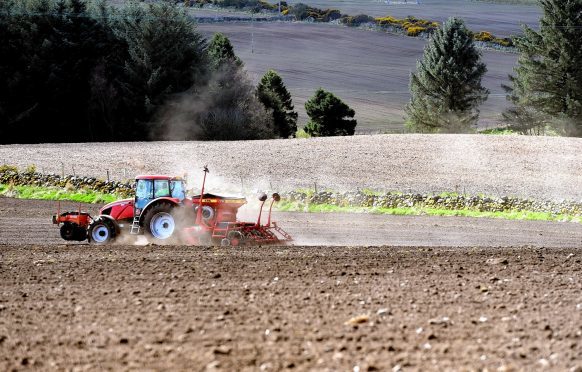Farmers and crofters have been urged to take steps to reduce the impact of leatherjacket grubs on grassland and spring crops sown after grass.
According to SRUC, there is a high risk of damage from crane fly or daddy-longlegs larvae, or leatherjackets as they are commonly known.
The latest results from an annual survey, assessing leatherjacket presence, reveals an average density of 1.6million grubs per hectare.
The rural college is now urging farmers to start taking steps to reduce leatherjacket damage.
“The loss of reliable chemical controls last year and the high degree of risk this year means that it is even more important that farmers start planning now if they want to limit leatherjacket damage to crops and grassland on their farms,” said SRUC ecologist Professor Davy McCraken.
He urged farmers to assess leatherjacket density before making any spring crop or grassland management decisions.
“The lack of any ‘quick fix’ through chemical control now means that the focus has switched to damage limitation,” added Prof McCraken.
“Therefore identifying which grassland fields have high grubs numbers, well before they start to cause damage, will be key before time, effort and money is wasted applying fertiliser to fields where the forage yields will be much lower or spring crops are planted into a field where they will be subsequently decimated by the grubs still present after ploughing and cultivation.”
AHDB Cereals and Oilseeds exchange manager for Scotland, Gavin Dick, said farmers needed to take a pro-active approach to minimising the risk of leatherjacket damage to their crops.
He said: “With high populations found in the SRUC survey, it would be sensible for growers to test any fields going into spring cereals out of grass.
“If they find levels over 0.6million grubs/ha, then they should consider whether or not to plough out the grass this year. If the field is already ploughed there are limited options available, but ensuring the seedbed is well consolidated by rolling will reduce damage levels in the short-term.
“They should also ensure good quality seed is used with high vigour and then prioritise that field in respect of drilling conditions. An ideal seedbed will give the plant more chance to establish quickly and grow away from potential damage. Seedbed fertiliser should be used to enhance faster growth.”










